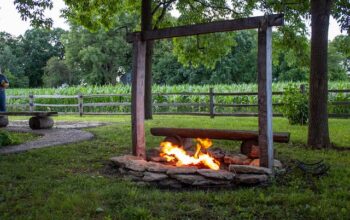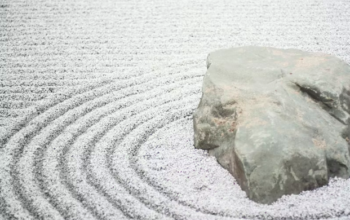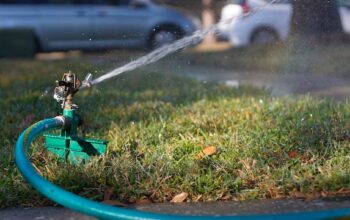For garden lovers, we know you placed a lot of effort in maintaining and beautifying your garden. Upkeeping those luscious green grass, healthy plants, and alluring flowers require a lot of effort to maintain; which is why you must be keen in keeping off invasive and dangerous plants that might destroy the green paradise you have created
Did you know that there are plants that might look pleasing but can actually destroy your garden? Appearances can be deceiving and some greenery is not an exception. In this article, we give you 10 common types of plants that you need to avoid to keep your garden safe from damage.
- Bamboo
Although a bamboo can give your backyard an exotic look, there are measures that you as a gardener need to look after. It is in the nature of a bamboo to grow and spread widely throughout their surroundings.This is what you need to avoid.
If you happen to have a bamboo in your backyard, you need to apply plastic or concrete root barriers to prevent its rhizomes from spreading all over your garden. There are types of bamboo that grow less rapidly and aren’t too invasive. These species include the Bambusa, Borinda, Chusquea, Fargesia and Otatea. The following bamboo types are extremely invasive: Chimonobambusa, Indocalamus, Pleioblastus and Sasa. Of course, if you don’t want to go through the hassle of making barriers then it’s best to avoid planting bamboo.
- Japanese Stiltgrass
An unstoppable grass that originated from the Eastern part of Asia is the Japanese Stiltgrass. This plant spreads widely and above the ground through seeds and rhizomes. When left unchecked, it creates a grass web trapping; causing the other plants around it to starve since the Japanese stiltgrass. Keep in mind that the more you dig the grass out, the more it grows. The reason for this is that the seeds of this plant best grow in loose soil.
- Purple Loosestrife
It makes sense to grow a purple loosestrife in your yard as it treats intestinal problems but you need to take a look at the bigger picture. This plant has “Marsh Monster” and “Beautiful Killer” as its nicknames which are already a red flag itself. Purple loosestrifes invade other vegetation and it can also spread fast. If you find these grasses growing in your yard, you can dig it out and burn the remains.
- Chinese Wisteria
A very pretty looking tree which deceives a lot of homeowners. It has a similar appearance to its cousin the Japanese Wisteria which can grow up at least 2 feet in diameter; making it easier to wrap itself tightly around the trees. This wrapping habit is enough to kill some tree species and other plants. If you are able to find this in your garden, remove it immediately from the trees, arbours, and pergolas; and then spray it with a systemic herbicide for a sure kill.
- Trumpet Vine
Another nosy plant you must avoid in your garden is the trumpet vine. Also known as the trumpet creeper, it can creep up trees and walls tightly. Removing this plant is also a nightmare since it can send shoots very far from the main plant — making it hard to control. Attempting to cut the vine is just a temporary solution. The best way to get rid of this plant is to firmly dig up its mother plant and shoots to clear it from any blooms.
- Mint (Mentha)
Everyone uses mint to adds flavour to their food; plus the fact that it also smells good. However, mint is actually invasive and can cover your whole garden. Avoid this kind of plant if you do not have enough time to take care of it. You can still grow this plant but be sure to place it in a container and keep it in a sunny window indoors. Keep it away from any other garden plants.
- Japanese Honeysuckle (Lonicera japonica)
These vines are used for coverings in the ground, invades wetlands, roadsides, and forest floors. It can climb for more than 80 feet. If you want to get rid these in your garden, you can pull it out using a shovel. Destroy all of its parts so that it won’t grow again. Never ever buy it unless you have plenty of time to trim the vines and avoid it from enveloping your garden and home.
- English Ivy (Hedera helix L.)
They grow fast on the walls, reach over your fence, and even cover your ground. It also climbs and chokes your trees. What makes it worse is that it can spread bacterial leaf scorch which is a plant disease that kills maples, oaks, and other native plants.
You can kill English ivy by prying the vines away from the tree or wall. If it is on the ground, you can dump several inches of mulch and leave it there. Many plant lovers love to grow these for decorative purposes; however, they forget how destructive it is because of its rapid growth. Save yourself the trouble and avoid this one in your garden.
- Belladonna
The common name for this plant is ‘deadly nightshade’ which is a hint that you should stay away from this plant. Don’t be tricked by its pretty purple flowers and green-rich leaves because it’s actually a harmful and toxic plant. Belladonna has toxic black berries which can be mistaken as an edible fruit by your kids or pets.
- Mimosa Tree
It’s easy for homeowners to find this tree aesthetically pleasing due to its plumed fern leaves and pink flowers, but you should really think twice if you’re considering to plant this tree in your garden. The mimosa tree is very invasive and can easily spread its seedlings not only in your garden but to your neighbours as well.
If you have any of these plants mentioned, start avoiding them. You should also be keen and vigilant with the plants growing in the garden since invasive grasses might be growing without you noticing.
Katie Jones is an enthusiastic content editor of Plumber Balmain Visit www.plumberbalmain.com.au for more information blogs with home improvement and plumbing.
Related Posts

Loves home. I am here to provide how to make your home a much better place. 🙂 Blogging about HomeDecor, Home Improvements and more.












